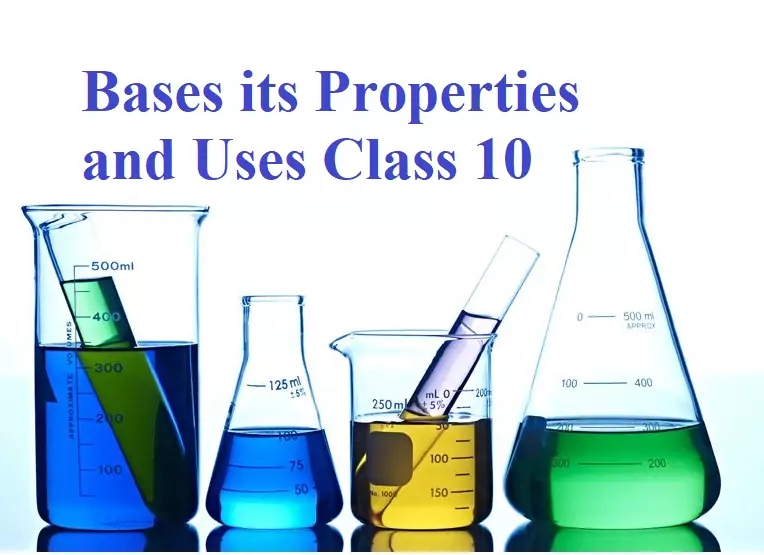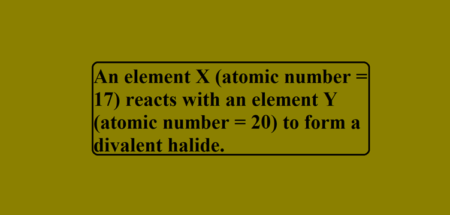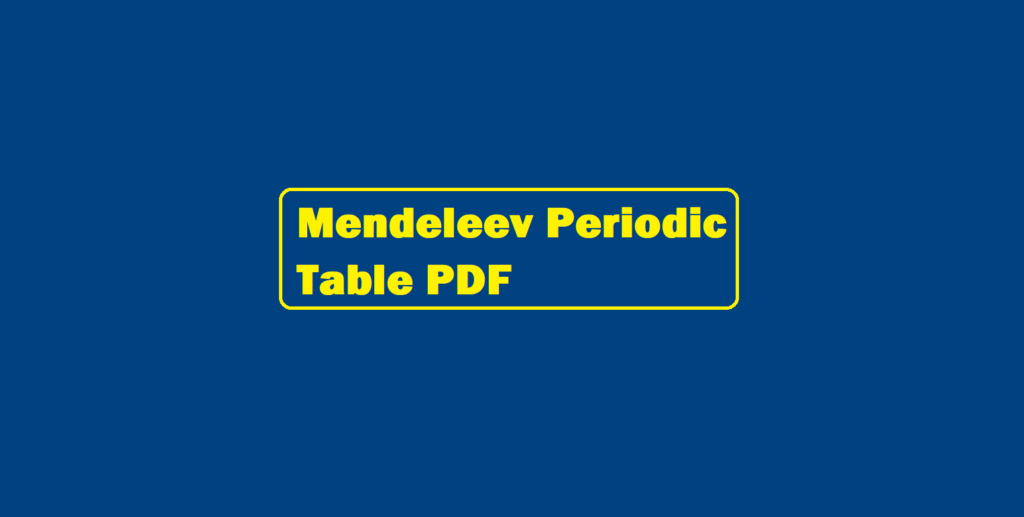Bases its Properties and Uses Class 10
BASES:
Substances that change red litmus solution blue are called bases. They are bitter in taste.
They release hydroxide ions (OH–) when dissolved in water. They have a soapy touch (e.g. Washing soda, caustic soda, and caustic potash).
CLASSIFICATION OF BASES:
1. Based on Ionisation:
(a) Strong Bases: These are bases that ionise completely in an aqueous solution eg. NaOH, KOH.
(b) Weak Bases: These are bases that ionise partially in an aqueous solution eg. NH4OH, Ca(OH)2.
2. Based on their Acidity:
(a) Monoacidic Base: It is a base that ionises in water to give one hydroxide ion per molecule eg. NaOH, KOH.
(b) Diacidic Base: It is a base that ionises in water to give two hydroxide ions per molecule eg. Ca(OH)2, Mg(OH)2.
(c) Triacidic Base: It is a base that ionises in water to give three hydroxide ions per molecule eg. Al(OH)3, Fe(OH)3.
Bases its Properties and Uses Class 10
3. Based on the Concentration:
Depending upon the amount of water added to a base, bases are classified as concentrated and dilute Bases.
(a) Concentrated alkali: It is an alkali having a relatively high percentage of alkali in its aqueous solution.
(b) Dilute alkali: It is an alkali having a relatively low percentage of alkali in its aqueous solution.
Chemical Properties of Base:
(a) Reaction of Base with Metals:
When alkali (base) reacts with metal, it produces salt and hydrogen gas.
Alkali + Metal → Salt + Hydrogen
Example 1. Sodium aluminate and hydrogen gas are formed when sodium hydroxide reacts with aluminium metal.
2 NaOH + 2 Al + 2 H2O → 2 NaAlO2 + 2 H2
Example 2. Sodium hydroxide gives hydrogen gas and sodium zincate when reacts with zinc metal.
2 NaOH + Zn → Na2ZnO2 + H2
(b) Reaction of Non-Metallic Oxides with Base:
Non- metallic oxides react with a base to produce Salt and Water
Non-metallic oxide + Base → Salt + Water
Example. Ca(OH)2 + CO2 → CaCO3 + H2O
Non Metallic oxides are said to be acidic in nature because on reacting with a base they produce Salt and Water.
Bases its Properties and Uses Class 10
(c) Action of Alkalis/Base with Ammonium Salts:
Alkalis combine with ammonium salts to liberate ammonia.
Alkali + Ammonium salt → Salt + Water + Ammonia
Example. Calcium Hydroxide when reacting with ammonium chloride produce calcium chloride water and ammonia
Ca(OH)2 + NH4Cl → CaCl2 + H2O + NH3
USES OF BASES:
(i) Magnesium hydroxide is used as a medicine for stomach troubles.
(ii) Ammonium hydroxide is used to remove grease stains from clothes.
(iii) Sodium hydroxide is used in the manufacture of soap.
(iv) Calcium hydroxide is used in whitewashing the buildings.
Bases its Properties and Uses Class 10


